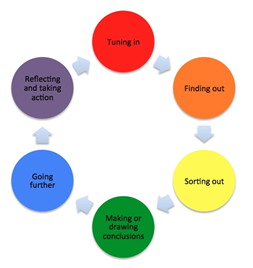

International School of Nagano

We will not waste food. 私たちは食べ物の無駄をつくりません。(11,12,13,15)
We will organize planting trees. 私たちは木を植えます。(11,12,13,15)
We will clean up the trash in the community. 私たちはコミュニティーのごみ削減に努めます。(11,12,13,15)
We work together to offer high quality education in the community and beyond. 私たちは質の良い教育を全ての人たちに提供される取り組みをします。(4,17)
What are the possible ways of assessing students’ understanding of the central idea? What evidence, including student-initiated actions, will we look for?
The students will start this Unit of inquiry by researching the main principles of construction (speed, safety, economy, environmental protection, aesthetic) and discussing how all of them are important in building; architecture and design are a combination of art and mathematics and science. The students will learn how to appreciate good architecture, both for its aesthetic aspect, but also for its functionality. They will also discuss the architecture of the future or how they would like architecture to develop in order to satisfy all of people’s needs and improve their quality of life.
As a formative task at the start of the Unit, the students will design their dream home. Through the Unit, they will work on this project, making sure it follows all the 5 principles of construction and updating the design after learning more about architecture and interior design.
Ultimately, for the Unit summative task, they will create a 1:20 scale architectural model of the home, which they will present to other classes/parents in a small exhibition. The presentation will include a model, a floor plan and a poster describing their process and inspiration. This is an oral, visual and written assignment.
What are the learning experiences suggested by the teacher and/or students to encourage the students to engage with the inquiries and address the driving questions?
Inquiry cycle

TUNING-IN: Students design their dream home.
FINDING OUT: Students search for the meaning of related vocabulary (related concepts) and are taught the principles of construction.
SORTING OUT: Students get a deeper understanding of every of the five principles of construction and of different sub-categories (types) of architecture.
MAKING CONCLUSIONS: Students understand how architecture and design are a sum of many different disciplines.
GOING FURTHER: Students look at architecture and design from a critic’s point of view in order to appreciate it more and discuss how good design can improve the quality of people’s lives.
TAKING ACTION: Students can think about themselves and how they would like the space around them to serve them. They present this and all their knowledge to the community through a detailed presentation of their dream home.